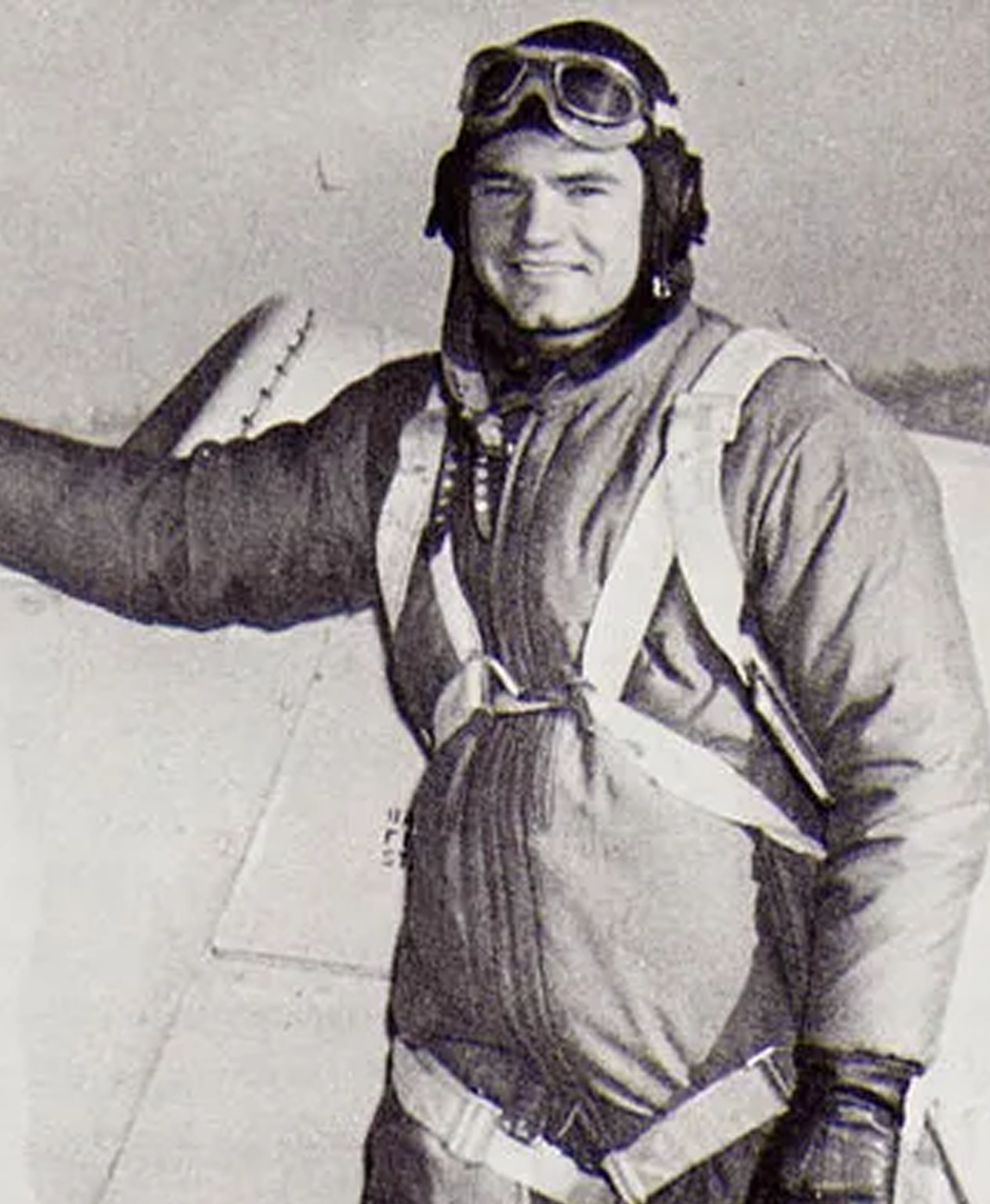

Born on July 9, 1918, in Adel, IA, Nile C. Kinnick, Jr. was the oldest of three children of Nile and Francis Ada Clarke Kinnick. The Kinnick family made their home in Adel until Nile, Sr. accepted a position in Omaha as a land appraiser with the Federal Land Bank in 1934.
Prior to arriving in Omaha, Nile, Jr. had completed his junior year of high school in Adel and had already established himself as an outstanding multi-sport athlete. He played football and basketball at Adel High School, and teamed for two seasons with future baseball hall-of-fame pitcher, Bob Feller, on Adel’s American Legion baseball team.
In the fall of 1934, Nile, Jr. enrolled at Benson High School in Omaha. He was a multi-sport star in football, basketball, and on Benson’s American Legion baseball team. In his only year at Benson, he excelled in every area and was voted “most likely to succeed” in the senior class elections.
Following his graduation from Benson, Nile, Jr. enrolled at the University of Iowa. He started out playing multiple sports – football, basketball, and baseball. He subsequently stopped playing basketball and baseball in order to have more time to focus on academic achievement. Football, however, remained an important part of Nile, Jr.’s college experience.
Nile, Jr. seemingly did everything on the football field in 1939. He played halfback, was the team’s primary passer, intercepted eight passes on defense, and drop-kicked extra-point attempts. At the end of the season, he was named the Big Ten Conference Most Valuable Player and he won every major player-of-the-year award including the Heisman Trophy.
Nile, Jr.’s college achievements extended well beyond the playing field. He finished in the top 1% of his graduating class and was elected to Iowa’s chapter of Phi Beta Kappa.
In 1940, Nile, Jr. entered law school at Iowa. After completing his first year of law school, he enlisted in the U.S. Navy Air Corps Reserve with the desire of becoming a Navy pilot.
Nile, Jr. received his training to fly the Grummond F4F-4 Wildcat fighter. He earned his wings and was commissioned an Ensign in September 1942. He was subsequently assigned to the USS Lexington (CV-16).
When ENS Kinnick reported to the Lexington in September 1942, an officer recruited him to play on a Navy football team in a game against Marines stationed on the base. With their Heisman Trophy winner leading the way, the Navy team won the game easily. After the game, ENS Kinnick was thanked by the officer who had recruited him to play... Lt. John F. Kennedy, the future 35th President of the United States.

On June 2, 1943, the USS Lexington was in the Gulf of Paria, near the coast of Venezuela. ENS Kinnick took off from the deck in an F4F-4 Wildcat. Shortly after takeoff, his plane lost oil pressure. Unable to return to the Lexington, he put his plane down in the Caribbean water. His body was never recovered. He was 24 years old.

ENS Nile C Kinnick, Jr. is remembered at the University of Iowa where the football stadium was named in his honor in 1972. He is also remembered in his second hometown of Omaha where the football stadium at Northwest High School was named in his honor in 1978.
2 June 1943
Gulf of Paria
